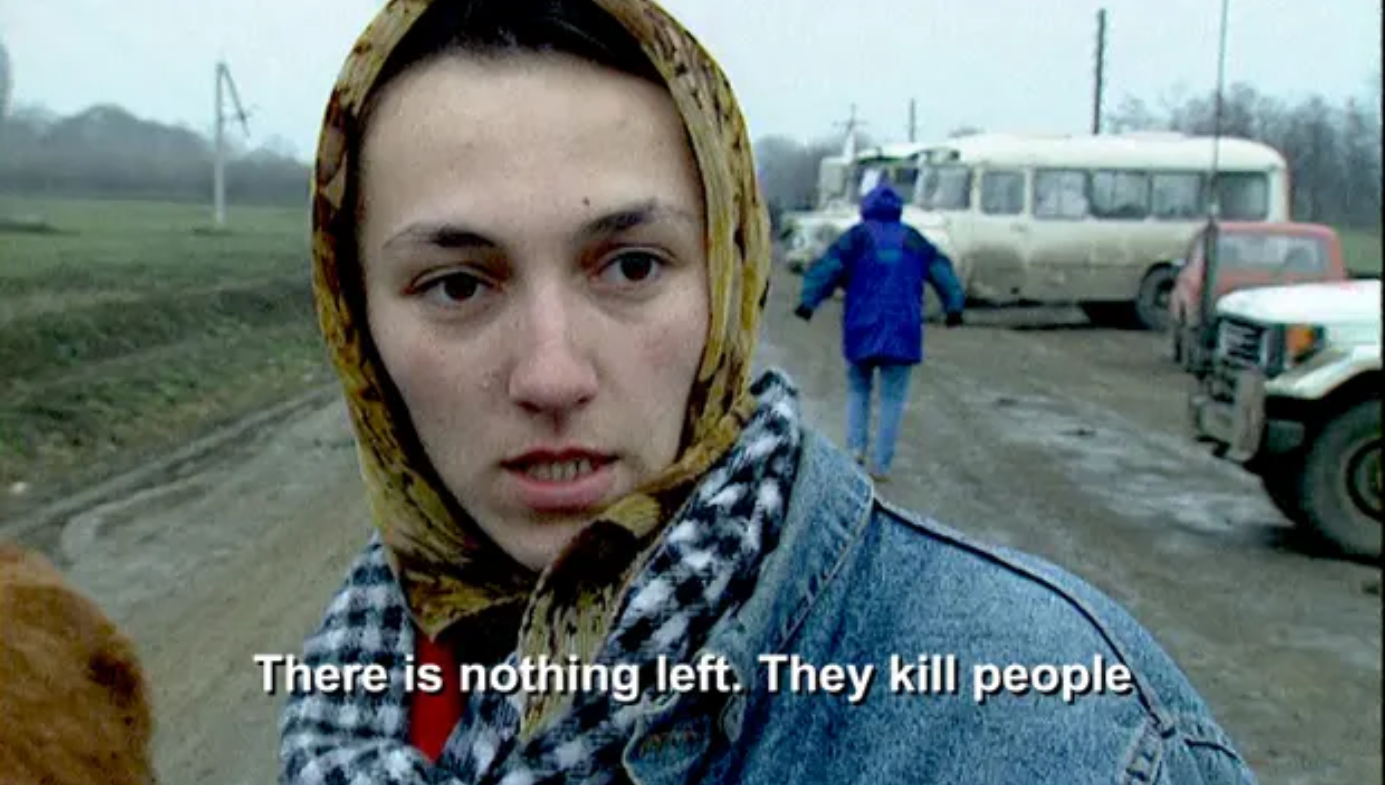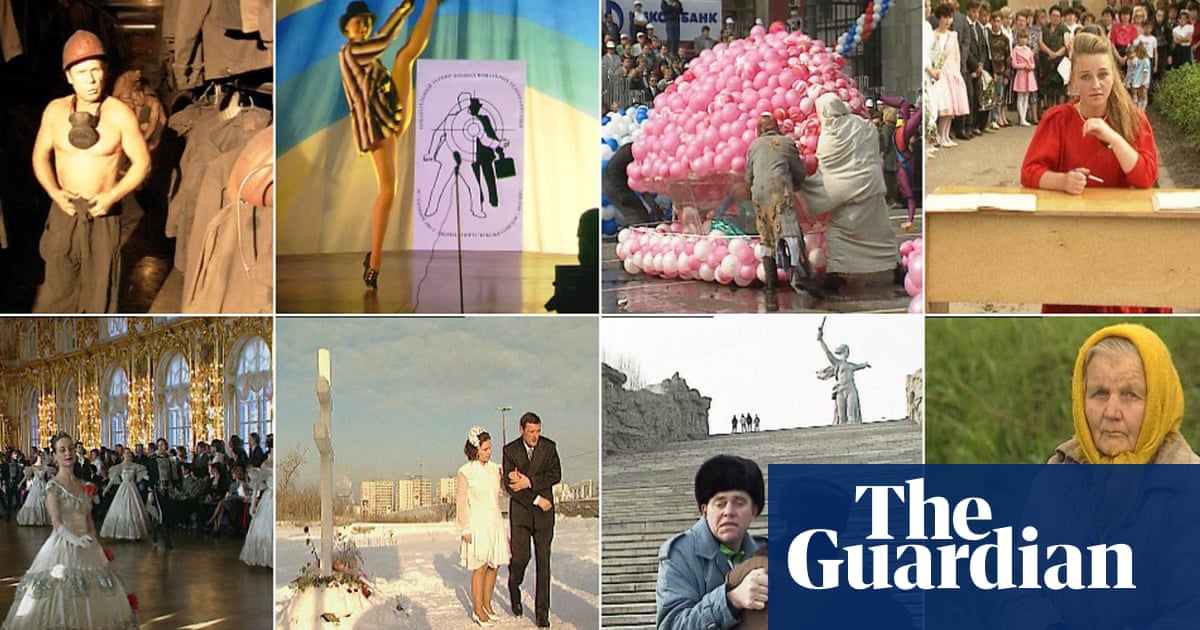A Strange and Brutal Country
Adam Curtis’s new BBC series provides a unique insight into Russia’s late-twentieth-century collapse.

When Winston Churchill published his four-volume work, History of the English-Speaking Peoples, Clement Attlee quipped that it should have been called “Things In History That Interested Me.” This would also be an apt title for most of Adam Curtis’s documentaries. Every time Curtis finishes a new film, he must dread being asked what it is about. “Well, you need to watch it really,” he might say, “but it’s basically about Bashar al-Assad, Lee Harvey Oswald, bankers, Silicon Valley, suicide bombings, UFOs, Henry Kissinger, the Mau Mau uprising, Donald Trump, and psychiatry.”
I have watched every film Adam Curtis has made in the last 20 years, most of them two or three times, but I would struggle to tell you what half of them are about. Bitter Lake is about Afghanistan. The Power of Nightmares is about al-Qaeda and the neoconservatives. The Trap is (sort of) about capitalism. The Century of the Self is definitely about psychoanalysis.
But those are his more coherent documentaries. When the iPlayer liberated him from conventional running times, he embraced the esoteric like never before. HyperNormalisation is mostly about Colonel Gaddafi, but there is over an hour of unconnected stories about random events before that starts to become clear. All Watched Over by Machines of Loving Grace is impossible to summarise. His (eight hour!) lockdown magnum opus Can’t Get You Out of My Head is about things in history that interest him.
Curtis has been accused, many times, of talking bollocks—of making the televisual equivalent of fast food for pseudo-intellectuals. His documentaries are often pretentious and in need of an editor (Bitter Lake was much improved after someone chopped an hour out of it). He makes wild assertions that do not withstand a moment’s thought. And yet his films are unmissable because they always contain interesting stories and digressions, and while it would be nice if the connections between them were less tenuous, he sometimes makes a point worth considering.
What is he trying to say and what does he want, this strange but brilliant man? He seems to dislike individualism, markets, neoliberals, and technocrats. He seems to think that things were better in the old days before our leaders—as he sees it—gave up on progress. He believes that politicians have abandoned their big visions and now have no story to tell their electorates. And having abandoned ideology, they are content to be managers of public life.
Curtis thinks this is a shame. I’m not so sure. Nobody is ever going to riot in the name of having more managerialism in public life, but big visions have led to disaster more often than they have led to Utopia. The irony is that Curtis’s films often demonstrate this. If there is a running theme in his work, it is the failure of big ideas to transform society as the visionaries intended. He likes a bit of radicalism, does Curtis. He admires the revolutionary spirit, but whenever he identifies a place where big visions have taken off, such as Communist China or various Islamic states, he doesn’t like what he finds.
His latest BBC documentary, Russia 1985–1999: TraumaZone, is all about failure. Perhaps Curtis has been chastened by criticism or maybe he is just exhausted, but it lacks the familiar handrail of his patient voiceover and tells a single story chronologically. Splicing unused news footage from the BBC Moscow archive, home videos, excerpts from other documentaries and at least one fictional film, it shows the collapse of the USSR and the rise and fall of Russian democracy. If you want to know why communism collapsed, you’d be better off reading a book. But if you want to see what it looked like, TraumaZone brings you as close as you’re going to get.
Two words of warning. First, it is seven hours long. If, like me, you had no problem watching the Beatles making their worst album for eight hours, you won’t mind spending seven hours watching one of the defining events of the 20th century, but it is not for everybody.
Second, the footage is unavoidably biased towards the middle and upper echelons of Russian society and towards Muscovites in particular. Ordinary Russians did not have camcorders in the 1980s and the Russian government did its best to make sure outsiders only saw what it wanted us to see. The urban proletariat lived in dilapidated tower blocks of unspeakable grimness that few people wanted to film. Farmers and peasants in the vast Soviet countryside also rarely attracted the attention of news crews. Almost everybody in TraumaZone looks poor by Western standards, as indeed they were, but a more inclusive picture would have been even more depressing.
Considering the level of censorship in the USSR, it is surprising—and telling—how bleak the archive footage remains. We see scientists crawling around the Chernobyl power plant after the explosion wearing homemade plastic suits held together with sticky tape. We see two women who lure men to their dingy flat, drug them and rob them before leaving them unconscious on a bus, justifying their actions by saying—no doubt truthfully—that other people “do things that are much more cruel.” We see Russians after the post-communism economy has collapsed digging up the corpses of German soldiers from the 1940s in the hope of finding something of value.
TraumaZone hints at something that is almost impossible to visualise: the sheer size of the Soviet Union. One minute we are in Kyiv, the next minute we are thousands of miles away on the edge of the Pacific. From sunny Armenia to the Siberian tundra, from Georgia to Lithuania, from Lithuania to Kazakhstan, it seems unthinkable that a single political party could rule such a huge chunk of the world.
It couldn’t last. Or maybe it could have. At any rate, it didn’t. When Gorbachev gave the satellite states the freedom to choose, they chose freedom from the USSR. The Russian people, led by Boris Yeltsin, soon did likewise. Under the economic stewardship of Yegor Gaidar, capitalism was imposed at pace in the most cack-handed way possible. The shelves emptied, hyperinflation took hold, and whole industries were gobbled up by oligarchs for a song. A chocolate factory worth $80 million was bought for $500,000. GazProm was sold off for a thousandth of its value. Yeltsin drifted into alcoholism and would spend hours staring at a wall muttering, “They are stealing Russia.” In the last 10 minutes of the final episode, we get our first glimpse of Vladimir Putin, the oligarchs’ choice for president. The end.
What we see is a country where people have been degraded by poverty and tyranny for decades, ruled over by an elite whose power is slipping away. Russia is being looted from within and without. Violence and nihilism reign. Everything is decrepit. Nothing works. Nobody knows what they are doing and nobody is coming to their rescue.
Restricted to the occasional caption and subtitle, Curtis refrains from editorialising. This cannot have been easy for him. I can picture him in the studio desperately resisting the urge to add a little sermon, particularly in the last episode. I couldn’t help wondering what he would say if he did. What does he want us to take away from these miles of videotape? Is it that communism and capitalism are as bad as each other? Or that capitalism requires stronger institutions and less corruption than the former Soviet Union could offer? Is he saying that a gangster like Putin has been able to maintain power for so long because Russians are scarred by their experience of freedom? Or has he simply decided that he is, first and foremost, an archivist?
TraumaZone could be littered with nudges, winks, and dogwhistles for all I
know. I am too basic for subtext, but even I noticed the recurring character of a
feral child who demands money from motorists stuck in traffic jams (“begging” is
too gentle a word for her approach). We see her again at the very end of the seven hours, a little older but still on the make. In Curtis’s mind, she is probably a metaphor for something, but it will not ruin your enjoyment if you can’t work out what it is.
When the film was released, Curtis wrote an overblown article in the Guardian drawing a silly parallel between Gaidar’s shock treatment and Liz Truss’s “experiment with extreme capitalism.” This was presumably a reference to her doomed attempt to take a penny off income tax and not raise corporation tax. Thankfully, this argument does not feature in TraumaZone itself and seems to have been no more than a marketing pitch to Guardian readers.

It is better to take TraumaZone at face value as a series of snapshots of an enormous, strange, beautiful, and brutal country filmed from many angles. A nation accustomed to misery, whose short-lived experiment with freedom felt like a further betrayal. Few people have suffered for so long under so many different forms of despotism as the Russians. Briefly welcomed into the family of nations, Russia is now a pariah once more. This proud, paranoid, and angry country may yet destroy the world. TraumaZone does not fully explain how it came to this, but it provides a unique insight into one important step along the road.












